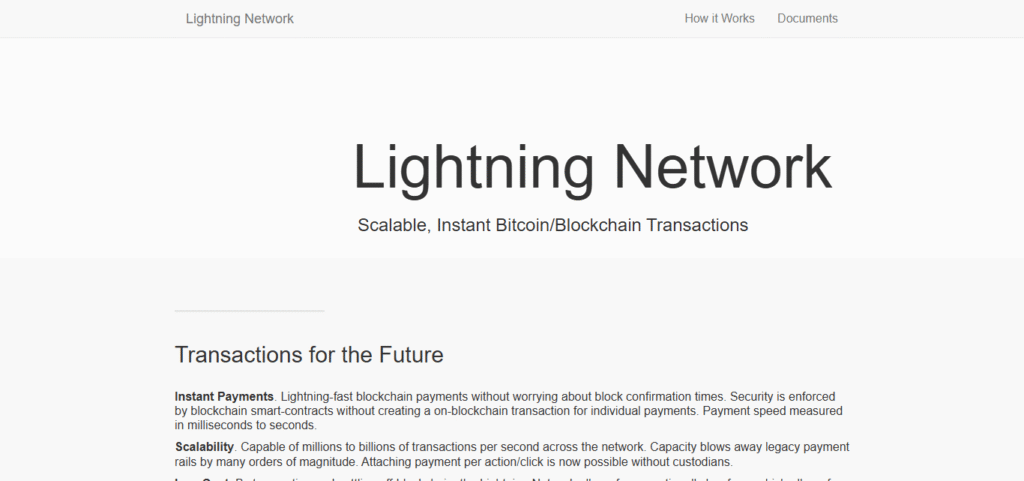In the following article, I will explain how to keep BTC on a hardware wallet that has Lightning capabilities.
This method allows for the cold storage of tokens while also utilizing the Lightning Network to send and receive Bitcoin instantly and at a low cost.
I will walk you through the steps of the setup, funding, and other practices necessary to ensure optimum security of your funds.
What Is The Lightning Network?
The Lightning Network is a second-layer protocol built atop of Bitcoin’s blockchain. It enables fast and cost-effective transactions by creating payment channels off the chain.
With the Lightning Network, users are able to send and receive BTC instantly without waiting for confirmations on the chain, thus promoting scalability and facilitating microtransactions.

It is particularly beneficial for day-to-day payments and mitigating congestion within the network.
How To Store Btc On A Lightning-enabled Hardware Wallet
Step 1: Configure the Hardware Wallet BitBox02

- Get the device and set it up with the BitBoxApp; the wallet should be functioning.
- Create a recovery phrase and ensure it’s safely saved; it should be 24 words.
- Choose a strong password for the device.
Step 2: Setup and Install Umbrel (Lightning Node) Version
- Install an Umbrel node on Raspberry Pi or other suitable devices.
- Boot your node, connect it to your home network, and create an Umbrel account.
- In the Umbrel dashboard, switch on the Lightning node option.
Step 3: Top Up Your Bitcoin Wallet On-Chain Balance
- Get a Bitcoin address spun up on BitBox02.
- Purchase BTC at an exchange or via any other wallets and push to this address.
- Wait a bit for on-chain confirmations.
Step 4: Pairing BitBox02 with Umbrel for Lightning Functionality
- Even though BitBox02 does not support Lightning out of the box, it can be used as a secure signer with external Lightning applications such as Zeus Wallet, RTL, or Sparrow by connecting to Umbrel node.
- Open Lightning channels via your Umbrel node with your on-chain BTC.
Step 5: Control Lightning Channels
- Use your funded wallet to open channels through Umbrel’s GUI.
- Maintain inbound/outbound liquidity to better manage payments.
- As necessary, close or rebalance channels.
Step 6: Receive and Make Lightning Payments
- Access your Umbrel node using Zeus or LNBits and make payments through a Lightning network.
- Your private keys are encrypted through BitBox02 and Lightning transaction handling is done via Umbrel.
- Payments can be sent and received over Lightning network swiftly and at a lower cost.
Step 7: Protect Security
- Update BitBox02 firmware when needed.
- Your recovery seed should be stored in a secure offline location.
- The Umbrel node as well as backing up the channel backup file needs to be done regularly.
Choosing The Right Lightning-enabled Hardware Wallet
Lightning Support: Additional integration with nodes such as Umbrel or Voltage provides native support or compatibility.
Open-Source Firmware: Gives the possibility of being reviewed by the community.
Secure Element: Protects your private keys using hardware security.
Ease of Use: Minimal setup effort, well-written instructions for maximum comprehension.
Community and Developer Support: Regular maintenance and vibrant community discussion boards.
Using the Wallet for Lightning Transactions
Sending Lightning Payments
- Make use of a connected application like Zeus, LNBits, or Ride The Lightning which is paired with your node.
- Put down the payment details of the recipient or scan their QR code.
- Approve payments. Payment routing is done by your node while wallet signing takes place securely.
- Payment takes almost no time at all and costs a few satoshis.
Receiving Lightning Payments
- With your app, create a Lightning payment invoice.
- Distribute the invoice and QR code to the requester.
- Check if the channel you are using has enough inbound liquidity to facilitate fund reception.
- Payments come in real time and are off-chain.
Managing Channels
- From your node, open additional channels with the on-chain resources that your wallet possesses.
- Keep track of liquidity (both inbound/outbound) via the dashboard of your node.
- For consistent performance, close, rebalance, or open new channels when necessary.
Backup and Recovery
- From time to time, perform a backup with your Lightning node and pay attention to the channel backup file.
- Keep the recovery seed of your hardware wallet in an offline, secure location.
- If the device is misplaced, your on-chain funds can still be retrieved, and the backup will allow you to restore Lightning channels.
Security Best Practices Lightning-enabled Hardware Wallet
Protect Your Recovery Seed
- Always record your recovery seed phrase on paper and never in digital form.
- Use fireproof, waterproof backups, like steel seed plates.
- Store the items securely but out of sight.
Use A Strong Passphrase (If Supported)
- Create a unique passphrase in addition to the recovery seed.
- Keep it secret and separate from the recovery seed in order to enhance security.
Update Software and Firmware Regularly
- Ensure your hardware wallet is fully updated.
- Update your Lightning node software (LND, Core Lightning) as well.
- Updates usually cover critical bugs, newly added features, and increased security.
Maintain Security For Your Lightning Node
- If self-hosted (Umbrel, Start9), modify default passwords.
- Always use a VPN or Tor for remote access.
- Set up encrypted backups to be stored in multiple secure locations.
Refrain From Using Custodial Lightning Wallets For Significant Sums
- Keep small amounts that may require quick access in custodial wallets.
- Your BTC should primarily reside in a hardware wallet, only accessible through Lightning via a secure personal node.
Maintain Channel Hygiene
- Do not overfund a single channel.
- Monitor channel performance and close underperforming or unused ones.
Limitations and Considerations
Liquidity Issues
- Inbound Liquidity: You must have enough inbound liquidity in your channels to receive payments. It may cause payments to fail.
- Outbound Liquidity: You need sufficient liquidity in your outgoing channels to send funds. Transactions can be delayed or not processed if funds are low.
- Channel Capacity: There is a limit to how much can be routed through each channel. Fully loaded channels may require new ones to be opened to sustain higher volume management.
- Managing Liquidity: Users are responsible for routinely monitoring and maintaining channels so that they do not encounter blocked payments or bottleneck drawbacks.
Channel Management Complexity
- Opening Channels: Lightning Network necessitates opening channels with other nodes witching using on-chain Bitcoin transactions.
- Channel Monitoring: Tracking the status of several channels (e.g. liquidity balance) could get complicated. Complexity rises from setup size increases.
- Rebalancing: Channels can become lopsided or imbalanced. Payments or new channels may need routing for rebalancing which adds to complexity.Channel Closure: The closing of channels necessitates transactions that need to be paid for on-chain. If channels are not actively managed, the mismanagement of poorly optimized channels can lead to closure and loss of funds.
Comparison with Custodial Lightning Apps
Oversight of Funds: Non-custodial hardware wallets permit total control over funds; however, digital custodial apps take custody and hold funds on your behalf. As with every other type of relinquishing control, custodial apps come with the tradeoff of relinquishing self-custody trust.
Privacy: Non-custodial hardware wallets, like Lightning wallets, give users better privacy since they control the keys, unlike custodial wallets that may track user activity.
Ease of Use vs. Security: Starter non-custodial wallets are less intuitive and require more setup than custodial wallets; as such, custodial wallets can be more user-friendly. On the other hand, non-custodial wallets provide better security in the form of hardware wallets but may require technical expertise when it comes to set up and channel management.
Fee Structure: While custodial Lightning apps tend to have administration costs relating to channel management and liquidity provisioning, non-custodial wallets manage their own channels, allowing users to have more control over fees.
Conclusion
To conclude, Lightning-capable hardware wallets – offer improved security for storing BTC and faster, cheaper transaction fees.
By interfacing with a Lightning node, users can receive and send payments instantly while retaining full control of their funds.
Nonetheless, the management of liquidity and channels in a system has to be dealt with with a certain level of practised precision and skill.
If proper caution is adhered to alongside set up and security measures, these method serves as an effective and reliable means of Bitcoin utilization.










